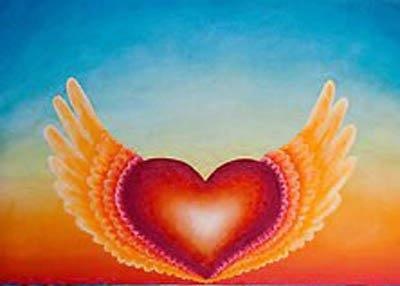What is Yoga Therapy? I like to think of it as the skillful use of Yogic tools to accompany an individual into wholeness. The word “Yoga” ultimately means wholeness, or union. It comes from the Sanskrit word “yug” which means “to yoke”. When you yoke horses, you harness their power and willingness to help. As a team, the driver and horses work together to move forward. In the same way, all the varied practices of Yoga draw together and cultivate the best qualities of body, mind and spirit. Together they bring ease, relief and improved health.
We seek therapy and healing when something is out of balance. It could be a sprained ankle, a bad back, a bio-mechanical imbalance, a broken heart, stress, depression, anxiety, grief, arthritis, or any number of other possibilities. Despite the condition, there is a sincere desire to feel whole again, or at least to feel better!
As a Yoga Therapist, I have been trained to see every individual as unique and multidimensional. All of us have a physical body, mind, emotions, history and joyful possibilities. Any condition will affect all of these aspects to different degrees, so all need to be treated with the right “medicine”. Do you know that what you believe about your condition, how you breathe and how you take care of yourself contribute to your total health and well-being?
With this in mind, there are many Yogic tools that can help us. These days we are all familiar with the physical postures and flows of Yoga, the asanas. These physical poses create strength, flexibility, balance and confidence in our bodies and they also have a positive effect on our internal organs and hormonal systems. They help us move through our lives with strength and grace.
The art of mindful breathing, Pranayama, enhances all therapeutic work. It is my personal field of specialisation. I like to call pranayama “the jewel in the crown of Yoga”. Mindful breathing deepens our understanding of the physical poses when we are in them, and when we move in and out of them. Calming breaths create a quiet mind, as well as a quiet body. Healing and rejuvenation take place naturally in such states of relaxation. This is very helpful in cases of stress, anxiety and pain. Energizing breath can perk us up and clear our minds. This helps in apathetic states and certain types of depression. All this, as well as bringing more oxygen into our blood and cells!
When we are calm, we can see things more clearly. Self-reflection, Swadhyaya, touches on our beliefs and internal narrative (self-talk) surrounding our conditions or injuries, which affect our ability to heal or not. We begin to observe our habituated patterns of thought and movement with more objectivity and less reactivity.
Meditation, Dhyana, quiets our chattering mind and gives us pause, so that we may explore possibilities that lie outside out habituated reactions. Together, self-reflection and meditation help us to reframe our relationship with our condition. This is especially important in long-standing or chronic situations, as it can be very wearing to deal with pain on a constant basis. The Yogic viewpoint helps us to remember that we are more than “just” our bodies, and that we can all live life feeling whole rather than fragmented. In conditions that cannot be cured, we can find a way to live well and gracefully nevertheless.
For those who are spiritually inclined, prayer and faith can be used for inner strength, comfort and acceptance. Worship in the traditions of your close ancestors is especially meaningful.
And each of us need to ask ourselves this: “What brings me joy?” Make time every day to connect with the people, places or things that bring you joy. It can even be through a few moments of happy memory. Never underestimate the vitality that accompanies doses of joy! Each part of ourselves needs to be nourished in order to thrive.
Every treatment plan is customized and takes an individual’s goals, needs, age, abilities and natural inclinations into consideration. It is a collaborative dance between the individual and the therapist. With the information gathered during intake and the individual’s goals in mind, the therapist draws on her training, experience and creative skills to match the best practices for the individual. This person will need repeat the practices given on a daily basis to help them “stick”. Regular home practice on the part of the individual will ensure success, and the satisfaction of long-lasting results and improved quality of life.
Yoga Therapy is not a replacement for Western medicine, although in some cases people can manage their conditions well with Yoga alone. It is possible for a person on anti-depressants to reduce the amounts needed. This would always be done under the supervision of her doctor. It is best to think of Yoga Therapy as an adjunct to Western medicine, where East and West share their gifts and strengths with one another and nourish and broaden their range. An ideal situation would offer a healing team with a medical doctor as well as a Yoga therapist on board.
About me: A little bit about my backgound: I have been practising Yoga for over 40 years, and am grateful for the opportunities to have studied asana, pranayama, philosophy, meditation and therapeutics from many wonderful and generous teachers who lit a spark in me. As well as sharing these subjects with students from divers backgrounds and in teacher training programs, I have a private Yoga Therapy practice at my own studio (in Kensington Market) and at the Athletic Edge Sports Medicine Clinic in downtown Toronto. I also make house calls in downtown Toronto.
My formal Yoga Therapy training is from the Rocky Mountain School of Yoga and Ayurveda in Boulder Colorado. I learned Yogic Philosophy and Pranayama at the feet of Baba Hari Dass. I also practice Therapeutic and Healing Touch, as well as QiGong (a form of Chinese yoga), and customize programs to individual needs.
If you are interested in a private Yoga Therapy session, or would like more information, please contact karusia <at> shaktiflow.com.

